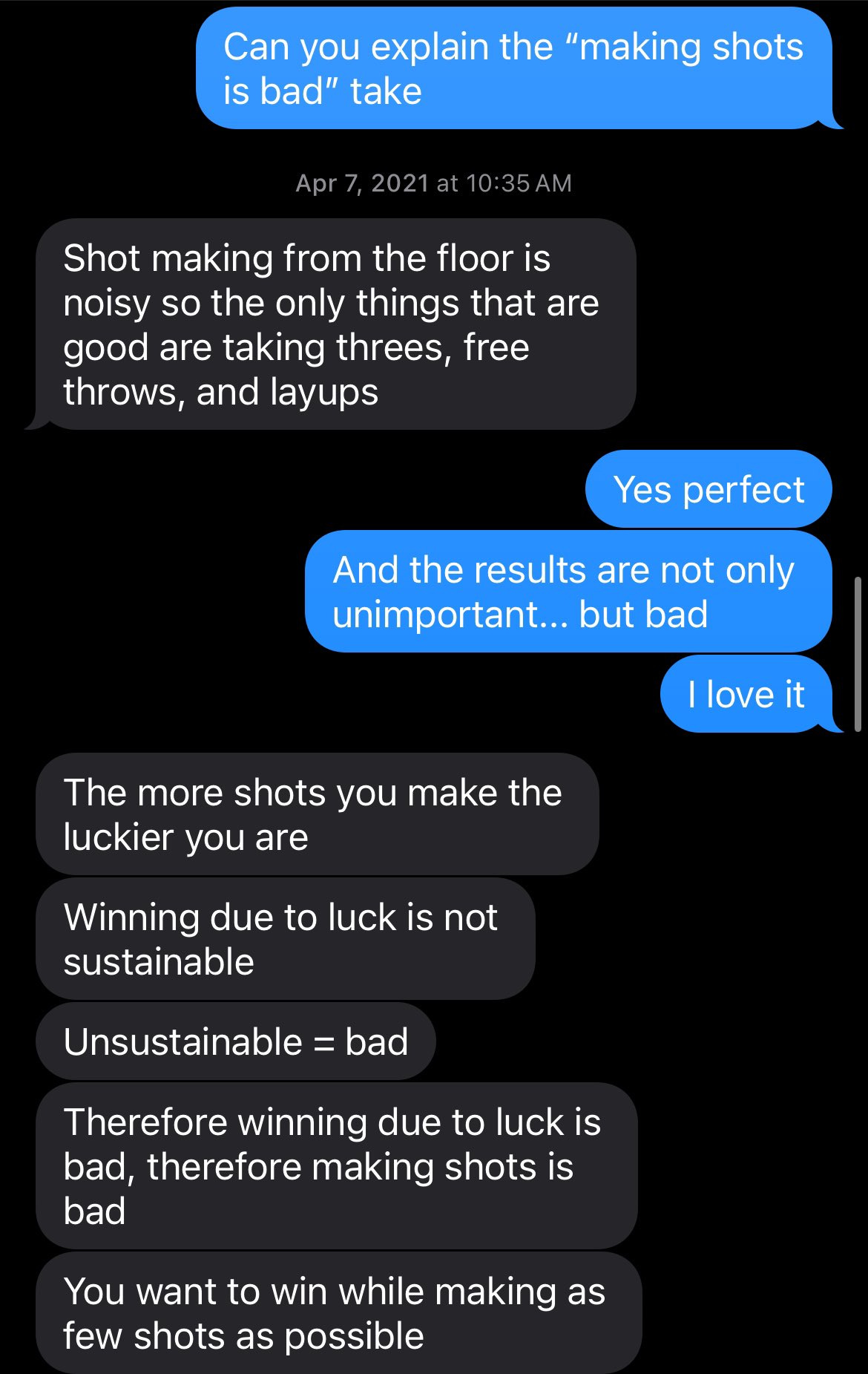Can Texas A&M's brand of ugly win in March?
One team dares to ask: what if missing the shot IS the point?
A long-time mutual of mine, known only to me as Beng, once shared this thought of logic from his brother-in-law. It is one of the most brilliantly goofy philosophical views of basketball I have ever heard.
It is a truly baffling conclusion to come to, yet it isn’t really as goofy as you’re going to assume. At the time of writing, 99 days of basketball have been played this season. Teams win when they get outshot pretty much every night. If you go by pure field goal percentage, it’s happened 761 times this year, or about 7.7 times per day. By effective field goal percentage, it’s happened 741 times. Do we suggest that you should simply make the shots you take? Of course. But, well, you’re not always going to. If you did, we would’ve solved basketball already.
Since the start of the 2021-22 season, there’s been a few programs that have gotten really good at winning when they get outshot. None have been better than Texas A&M, a team that has won 32 games while getting outshot from the field out of a possible 65. Only the College of Charleston, whose coach is now at Louisville, has a better win percentage with a minimum of 50 games.
Texas A&M is a land of contrasts. They are 19-5, top-15 in KenPom, and currently tracking to be anywhere from a 2-4 seed, per Torvik. They have wins over Texas Tech, Purdue, Ole Miss, and Mizzou all away from home. As of now, they’re tracking to be the best A&M team since the 2006-07 group with Acie Law and crew that got a 3 seed and finished 7th in KenPom.
Also, these are their shooting numbers.
I’ve mentioned in the past a very large sheet of team data I keep from 2002-present in the NCAA Tournament. In that time, over 23 Tournaments, 28 different teams have made the Tournament with a sub-50% 2PT, sub-32% 3PT, and sub-69% FT. None have ever been seeded above a 4 (2012 and 2015 Louisville). As it stands, Texas A&M’s average seed projection is a 3, and it’s probable that on Saturday during the committee’s reveal of the top 16 teams so far, they’re a 2 seed.
Basically, what Texas A&M is doing is somewhat unprecedented. We’ve seen teams have bad offenses and get solid seeds before, but the Aggies have pushed it to a new level. On the first shot of any possession, per CBB Analytics, the Aggies shoot 45.1% from two and 28.7% from three. Those are ABOMINABLE numbers. For comparison, last year’s Rutgers offense - one of the five worst Power Five offenses in the sport’s history, per KenPom - shot 43.7% on twos and 28.7% from threes.
And yet, because they are so relentlessly dominant on the boards and in getting to the free throw line, Texas A&M has the 36th-best offense in America. How can we square such horrific shooting numbers with what a schedule-adjusted system tells us is a fairly good offense? Can it work in March? Has it? Should it? The last is perhaps more spiritual or philosophical, and the answer depends on who you ask.
BEHIND THE WALL ($): Texas A&M as 2009 Michigan State…or 2016 West Virginia?





